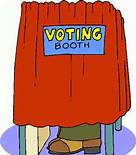Voter Laws Threaten to Limit Political Clout for People of Color
CHICAGO – In a democracy, few rights are as cherished as the right to vote. Yet, in the United States people of color, mainly Latinos, African Americans, Asians and Native Americans, are finding that the more they demonstrate their civic responsibility by voting, the more obstacles that surface designed to weaken the power of their votes.
Since 2008, when the nation elected its first African American president, there have been numerous efforts in various states to impact ballot access. Legislatures in 19 states have tightened identification requirements for citizens who wish to vote. Many of these new laws require citizens to show a state-issued form of photo ID.
The New York University School of Law Brennan Center for Justice warned in 2006 that because identification documents are not distributed equally across the population, voter ID laws would significantly affect voter access for people of color – especially Latinos and African Americans – who possessed photo identification at considerably lower rates than whites.
That prediction became reality last November. A study conducted immediately after the 2012 election surveyed a nationally representative sample of 1,500 young people between the ages of 18 and 29 with large oversamples of Blacks and Latinos. Consistent with other national reports, the study sponsored by the Black Youth Project confirmed that a high voter turnout among youth. It also determined that young people of color-especially Black youth-were asked to show identification when voting at considerably higher rates than white youth.
Even in states with no identification laws, 66 percent of Black youth and 55 percent of Latino youth were asked to show ID, compared with 43 percent of white youth. When nonvoters were asked to indicate the reasons why they did not vote, Black youth were three times as likely as white youth (17 percent compared with 5 percent) to say that they did not vote because they lacked the proper identification documents. The study provides compelling evidence that identification laws are applied inconsistently across racial groups, and appear to reduce turnout disproportionately among people of color.
In the aftermath of the 2012 election, also under attack is the principle of “one person, one vote” established in 1964 when the Supreme Court ruled in Reynolds v. Sims that legislative districts must contain equal numbers of citizens.
Several states, including Michigan, Pennsylvania, Ohio and Virginia, recently considered or are considering measures to apportion their electoral votes by congressional districts in place of the winner-take-all system currently in place. Discussions of these proposals have focused, not incorrectly, on the implications for the outcomes of presidential elections. But these proposals are designed explicitly to reduce the electoral influence of citizens living in densely populated areas-precisely those areas more likely to contain larger proportions of people of color-and increase the electoral importance of people living in more sparsely populated areas that take up larger swaths of geography.
As Sen. Charles Carrico, who introduced the measure in the Virginia State Senate, explained, residents in rural areas “were concerned that it didn’t matter what they did, that more densely populated areas were going to outvote them.” Under these plans, the gerrymandering of congressional districts ensures that Black voters in states like Ohio and Pennsylvania would have considerably less influence on the apportionment of the state’s electoral votes.
For instance, the 538 blog recently reported that President Obama would have lost twelve of Ohio’s 18 electoral votes had they been apportioned by congressional district. Not only would this have distorted the voices of Ohio’s voters writ large (Obama received more than 100,000 votes more than Romney), but it also would have significantly weakened the influence of Ohio’s Black voters. Nearly percent of 65 percent of Black residents of Ohio are concentrated in the four congressional districts (mostly in the Cleveland area) in which Obama won. Along with weakening the political potency of urban voters generally, proposals to apportion Electoral College votes by congressional district seriously devalue the votes from people of color.
This tension between individuals and geography is also found in the debate surrounding the current Supreme Court case Shelby County v. Holder. At issue is Section 5 of the Voting Rights Act, which requires states with a history of racially discriminatory voting practices to receive federal clearance before changing electoral laws.
In oral arguments on February 27, attorney Bert Rein argued on behalf of Shelby County, Alabama that this provision is “an inappropriate vehicle to sort out the sovereignty of individual states.” But the sovereignty of states should not be privileged over the equal protections constitutionally granted to individual citizens. Just as states like Ohio and Pennsylvania should not be allowed to weigh the votes of rural residents over votes from urban areas, neither should Alabama be excluded from provisions designed to protect Alabama citizens’ voting rights because Alabama’s sovereignty is judged to be more important than their citizens’ electoral voices.
Rein is right, though, on at least one point. As he and some of the conservative justices on the Court pointed out, the South is not uniquely racially discriminatory. Schemes to apportion Electoral College votes by congressional district, for instance, have been discussed mostly by states that are not required to receive federal preclearance. But this is not an argument for striking down Section 5. Indeed, any measure that limits ballot access or dilutes some group’s electoral influence in any state ought to be opposed.
However, if states like South Carolina, Texas, Virginia, and others currently subject to Section 5 have their way, significant numbers of people of color are especially likely to feel the negative consequences of new electoral laws. Keeping Section 5 in place will continue to help guard against attempts to limit the influence of people of color on Election Day.





